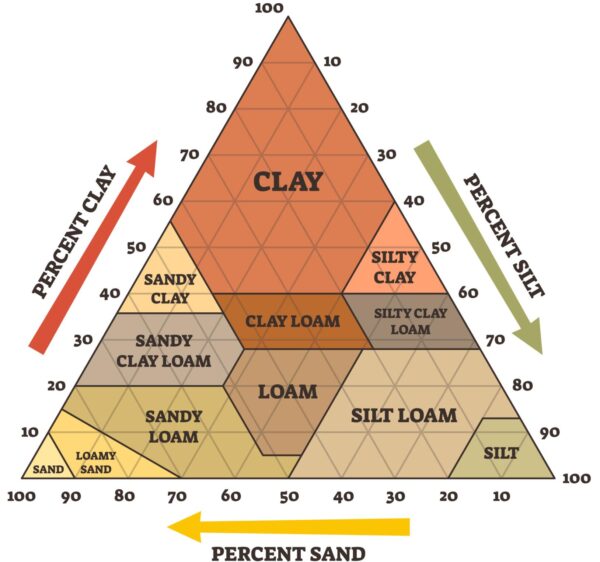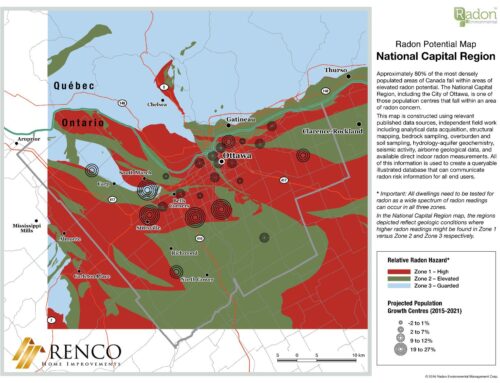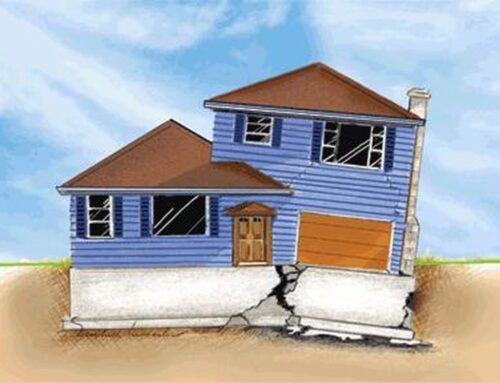If you live in Ottawa, your home could be sitting on unstable ground—literally. Ottawa’s unique soil, especially the notorious Leda clay, has been linked to foundation problems like cracking walls and sinking driveways. Concerned about what’s happening beneath your home? You’re not alone.
In this Q&A, we’ll answer the most pressing questions about Ottawa’s soil, identify the most at-risk neighborhoods, and explain how to protect your foundation. Here are the top questions from homeowners we will cover:
-
What types of soil do Ottawa neighborhoods have?
-
What is Leda Clay Soil?
-
How did the Champlain Sea deposit clay soil in Ottawa?
-
How can Ottawa’s clay soil impact your foundation?
-
Which Ottawa neighborhoods have the most clay soil?
-
What are the best neighborhoods in Ottawa for stable soil?
-
How can you protect your foundation if it’s built on Leda Clay?
What types of soil do Ottawa neighborhoods have?
Ottawa is built on a diverse range of soils, and understanding your soil type is key to protecting your foundation:
- Leda Clay (Quick Clay): Common in Orleans, Cumberland, and parts of Kanata, this marine clay is highly unstable. It can shrink, crack, or liquefy under stress, leading to severe foundation issues like sinking or shifting.
- Rocky Soil: Found in Kanata, Stittsville, and Westboro, rocky soil offers good support but complicates construction. Shallow soil over bedrock can lead to differential settlement if not properly reinforced.
- Sandy Soil: Seen in Westboro and along the Rideau River, sandy soil drains well but can cause foundations to settle unevenly over time.
- Loamy Soil: A balanced mix of sand, silt, and clay, found in Nepean and Barrhaven, offers more stability, reducing the risk of significant foundation movement.
Soil type affects how your foundation handles moisture, weight, and movement, making it critical for long-term home stability.
What is Leda Clay Soil?
Leda clay, also known as Quick Clay, is a highly sensitive marine clay deposited in Ottawa after the last Ice Age. As glaciers melted, the Champlain Sea flooded the area, leaving behind large deposits of this unstable clay. The key problem with Leda clay is its sensitivity to water: when exposed to fresh water, it can lose its strength, becoming a jelly-like substance that can no longer support weight. This can cause the soil to shift or liquefy, leading to significant foundation damage, such as cracks, sinking, or even collapse.
Leda clay is most common in areas like Orleans, Cumberland, and parts of Kanata, making homes in these neighborhoods particularly vulnerable. Builders must take extra precautions when constructing on Leda clay to prevent future foundation problems.
How did the Champlain Sea deposit clay soil in Ottawa?
Around 12,000 years ago, the Champlain Sea covered much of what is now the Ottawa Valley as glaciers from the last Ice Age melted. This vast inland sea left behind large deposits of marine clay, known today as Leda clay, which settled in layers at the bottom of the sea. When the glaciers retreated and the sea eventually receded, this clay remained across the region, particularly in low-lying areas like Orleans and Cumberland.
The water in the Champlain Sea contained salt, which helped stabilize the clay. Over time, as fresh water from rain and rivers filtered into the ground, it began leaching out the salt, weakening the clay’s structure. This geological history explains why much of Ottawa is built on sensitive and unstable clay that can shift or liquefy under stress.
How can Ottawa’s clay soil impact your foundation?
Ottawa’s clay soil, particularly Leda clay, poses significant risks to home foundations. Leda clay is highly sensitive and prone to shifting when disturbed or exposed to water. This can lead to several foundation issues, including:
- Cracks in foundation walls: As the clay expands or contracts, it can cause uneven pressure on your foundation, resulting in cracks.
- Foundation shifting: In extreme cases, the soil can liquefy, causing the foundation to shift or sink.
- Uneven settling: Homes built on clay may experience differential settling, where one part of the house sinks more than another.
If not addressed early, these problems can lead to costly repairs. Regularly monitoring your foundation and soil condition is essential to prevent long-term damage.
Which Ottawa neighborhoods have the most clay soil?
Several Ottawa neighborhoods are built on significant deposits of Leda clay, making them more susceptible to foundation issues. The most affected areas include:
- Orleans: Known for widespread Leda clay, especially in low-lying sections, homes here are particularly at risk for shifting foundations.
- Cumberland: This area also has substantial clay deposits, which, if not managed carefully, can lead to foundation instability.
- Kanata: While parts of Kanata have rocky soil, other sections are built on Leda clay, leading to uneven ground movement and potential foundation damage.
- Constance Bay: Located near the Ottawa River, this area has a mix of Leda clay deposits, which pose challenges for foundations and infrastructure.
If you live in one of these neighborhoods, monitoring your foundation for signs of movement or cracking is important.
What are the best neighborhoods in Ottawa for stable soil?
While many Ottawa neighborhoods deal with unstable Leda clay, there are areas where the soil is more stable and provides better support for foundations:
- Nepean: Loamy and sandy soils here offer good stability, minimizing the risk of foundation issues.
- Barrhaven: Known for loamy soil, homes in Barrhaven are less likely to experience foundation shifting.
- Westboro: A mix of sandy and rocky soil. The rocky areas in Westboro support foundations, while sandy areas may require reinforcement.
- Stittsville: Predominantly rocky soil, making it one of the more stable areas in terms of foundation reliability.
- Kanata (Rocky Areas): Kanata has rocky and Leda clay zones. The rocky sections offer excellent stability, while clay-prone areas are more vulnerable to movement.
- Orleans (High-Risk for Clay): While much of Orleans has Leda clay, certain areas with more sandy soil offer improved foundation support.
- Cumberland (High-Risk for Clay): Primarily covered with Leda clay, rocky outcrops provide better stability in certain pockets.
How can you protect your foundation if it’s built on Leda Clay?
If your home is built on Leda clay, proactive maintenance is essential to minimize foundation crack issues. Here are steps you can take:
- Ensure proper drainage: Grading your landscape and maintaining gutters will redirect water away from your foundation. Excess water can weaken the clay and cause it to shift.
- Seal cracks immediately: Small cracks in your foundation or driveway can allow water to seep in, worsening the clay’s instability. Seal them as soon as they appear.
- Install a drainage system: French drains or sump pumps can help manage groundwater and reduce the risk of clay saturation.
- Monitor for movement: Regularly inspect your home for signs of foundation movement, such as cracks, uneven floors, or sticking doors.
Consult a professional: If your foundation shows signs of distress, have a contractor assess whether excavation or reinforcing the base is needed.
If you suspect your home or neighborhood might be at risk due to Ottawa’s challenging soil conditions, it is crucial to take action before small issues become costly repairs. At Renco Foundation Repair, our experts can inspect your foundation, assess the soil conditions, and recommend the best action to protect your home.
Whether you notice cracks or want peace of mind, contact Renco Foundation Repair today for professional inspections, advice and solutions tailored to Ottawa’s unique soil challenges.
Get a foundation crack repair assessment today.
You will speak directly with Renco owner Terry Fraser and receive a free assessment and options of how to fix your foundation crack.






